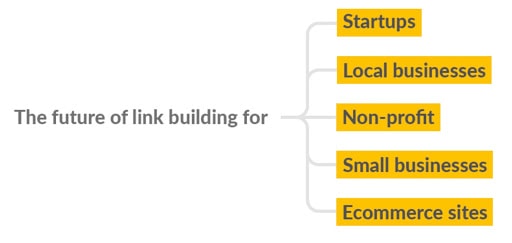In today’s competitive SEO landscape, the spammy link building tricks of yesteryear just won’t cut it.
Right now it’s all about producing quality content that will also attract quality links.
That said, there are some classic link building tactics that have stood the test of time.
Guest blogging is one of them.
When done right, guest blogging remains one of the best ways to build high-quality, contextual links that will help your website rank higher in Google.
On September 12, I hosted a sponsored SEJ ThinkTank webinar presented by Tim SouloDirector of Marketing at Ahrefs, who shared their own in-house content marketing team’s best tactics and strategies for guest blogging and link building success.
Here is a recap of the webinar presentation.
Common Guest Blogging Challenges and How to Solve Them
Building links through guest blogging comes with many challenges, including:
- Find blogs to guest post for.
- Find unique article ideas.
- Be accepted by leading publications.
Before tackling any of these issues, however, the first thing you need to consider is the quality of your content.
If your article is of poor quality, it will never be:
- Get accepted by top blogs.
- Get published for free.
- Attract all backlinks.
- Send referral traffic.
- Pass the “manual review”.
A successful guest blogging and link building campaign starts with great content, so that should be your main focus.
How to never run out of blogs to guest post for
Finding relevant blogs to guest post is difficult on its own. The typical process goes as follows:
- Create a large list of search queries for blog prospecting.
- Typical search queries include “guest post”, “guest post opportunities”, “submit a blog post”, etc.
- Scrape Google search results for all these search queries.
- Merge everything into a single list and remove duplicate entries.
- Pull important SEO metrics for each URL (blog).
Doing all of this manually can be inconvenient and time-consuming.
Solution
Using Ahrefs Content Explorer tool, it is easier to find blogs to guest post. The tool has a total content index size of almost a billion pages.

When you enter your “niche” keyword into the tool, you’ll find thousands of similar articles for your chosen topic, which you can easily export (no scraping required).
Content Explorer lets you filter your results based on your needs.
If you want to see unique blogs that contain your keyword, just check the One article per subject box.
You can also sort the results by Publication date, Language, Shares, Ranking of the domain, Referring domains, Organic trafficand Number of words.
Domain Rating (DR) is Ahrefs’ measure that indicates the backlink popularity of a certain website on a scale of zero to 100.
You might think you should only guest post for high DR blogs, but that’s not always the case.
Low DR blogs are not necessarily toxic. Instead, they’re probably new or unpopular right now. Small blogs will eventually become big blogs, so they might be worth it.
Blogs with DR 30-40 are an ideal starting point because they:
- Get fewer guest posts than higher DR blogs.
- Have lower editorial standards (easily accepted).
- Are perfect for building your portfolio of published articles.
It is important to note that the first link on a website (usually) provides the most value. While each subsequent link from the same website has less value.
In other words: “The more unique websites that refer to you, the better.”
Ahrefs’ content explorer has a Highlight unrelated domains feature that will help you find websites that have never linked to your website.
So how do you know these new blogs actually allow guest posts?
You don’t always have to look for blogs that specifically say they accept guest posts.
If your content is great, almost any blog will accept it, whether or not they have a Write for Us page.
Simply put, pitch your story ideas to any relevant blogs you find. (If the quality is there – they will take it!)
How to Create More Quality Guest Posts in Less Time
Coming up with great post ideas and scaling them up is pretty hard when you want to contribute unique content to a lot of different blogs.
But Soulo offers three guest blogging techniques that can help you solve this dilemma:
- The Robin Hood technique.
- The bursting technique.
- The technique of the point of view.
1. The Robin Hood technique
Implementing this tactic involves “flight of the rich and give to the poor.
In this case, blogs with a DR of 71 and above are considered the “rich” guys.
Stealing from the “rich” doesn’t mean you can legitimately search for popular posts and then copy and paste them onto your website.
What you need to do is take inspiration from popular posts from high DR blogs in your niche, identify what makes them popular, corn write your own article from scratch.
2. The bursting technique
You might end up with a “hero” item that’s too good to just give away. But you can still use it as a base for your guest posts.
A well-researched hero article will often consist of chapters/subsections. If you have a post that covers a large topic in detail, you can break it up into multiple “breakout” posts for guest blogging purposes.
When writing a hero post, you often need to adjust and make your subsections quite short so you don’t overwhelm people with extra information.
In the split technique, you turn subsections of your “hero” article into full-fledged articles and dive deep into the topic.
Because you’ve already done all your research writing that big monster hunk for your own blog, it should be super easy to produce those busted posts really quickly.
After turning each subsection into individual posts, you can then submit them to other blogs who would post them as guest posts. Each of your items would then be linked to your hero item.
This tactic is an amazing way to get quality and super relevant links.
3. The technique of the point of view
A slight shift in perspective leads to a whole new (and unique) article.
You can get one of the chapters from your hero article and turn it into multiple guest articles just by a slight change in perspective.
For example, if your topic is “The Future of Link Building,” you can come up with several other articles just by tailoring the topic to a particular niche.

These three techniques work incredibly well when combined.
How to Dramatically Improve Your Guest Blogging Results
Here are two tips for getting the most out of your guest blogging efforts.
Feature more blogs than you can handle
You should generate more demand than you can supply, as this puts you in a position where you can choose
between the available options.
Make blog owners crave your guest posts by:
- Find 2-3 article ideas (the good ones).
- Pitch them to 10-15 blogs (in 5-7 days).
Just in case two or more bloggers ask you for the same post idea, tell them:
“Sorry, you haven’t replied in a few days, so this post idea has been taken up by another blog.
But don’t worry, I’m sure I can suggest something else that will be just as good.
I will be in touch with more story ideas shortly.
Link to your old guest posts from new ones
Very often, blog owners are hungry for self-promotional links. But they don’t mind if you connect elsewhere.
Link to your past guest posts, to create a “tiered” link structure (and “pump up” the links you already have).
Be sure to let the blog owner know that you provided them with a high quality backlink.
[Video Recap] How to Build High-Quality Links at Scale Through Guest Blogging
Watch the video recap of the webinar presentation and Q&A session below.
Or check out the presentation platform.
Image credit
All screenshots taken by author, September 2018
Join us for our next webinar!
Large Scale SEO: What Large Ecommerce Sites Are Doing Differently
Do you find it more difficult to be discovered by new customers lately? E-commerce has never offered so many opportunities and faced so much competition as it does today. Learn how to scale your SEO efforts and grow your eCommerce business like the greats during our next webinar on March 9 at 2 p.m. ET.

